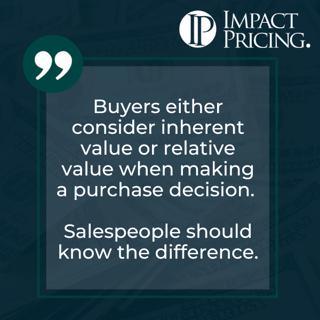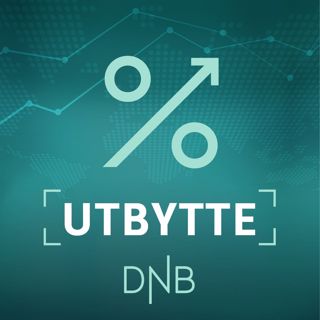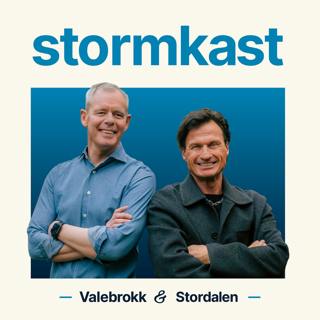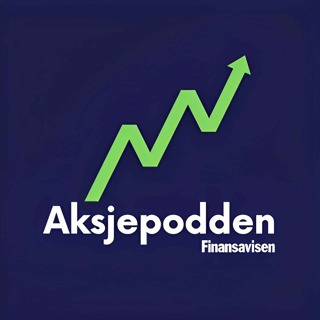
Brand Value for Big Sales: Insights from Satish Dharmarajan
Satish Dharmarajan is the Director of Pricing and Business Intelligence at Orkin, He is an Advisory Board Member at the University of Tennessee at Chattanooga, and has held analytics roles at Home Depot, Walgreens, and Whirlpool. Satish also acts in short films. In this episode, Satish educates us on differentiating products/services from competitors of similar offerings as he stresses the importance of understanding the buyer’s journey along with the core problem that they want to solve. Why you have to checkout today’s podcast: Learn the importance of knowing what the buyer's journey is and what state they are in as they come in to buy a product Find out how brands differentiate themselves from competitors when they all offer the same products/services Understand how customer-perceived value helps brands sell well even with competitors “If you know your customer, you can price it right. If you know what they're looking for, you can have them pay what you want them to pay for your product or service.” – Satish Dharmarajan Topics Covered: 01:50 – How Satish got into pricing 04:29 – Talking about getting to that ‘big place’ and the process that it involves in order to reach that 07:08 – The importance of knowing what the customer is specifically looking to solve 11:39 – Mark’s pigeon problem 12:40 – How brands differentiate themselves from competitors when they all offer the same products/services 17:54 – How customers choose where to buy between brands, and how pricing and packaging people should respond 20:59 – Appliance pricing at Home Depot; how customers care about price changes 23:34 – Looking at and analyzing competition; the importance of customer-perceived value 26:26 – Satish’s pricing advice 26:59 – Connect with Satish Key Takeaways: “That's basics of customer service, which is not too different if you were in the cellphone business, if you were in the internet business, or if you are doing anything else, selling anything else online. You would want to know what specifically that customer is looking to solve for.” – Satish Dharmarajan “The way your products are arranged next to each other, could be used as a leverage for selling the same products at a different price point.” – Satish Dharmarajan “As pricing professionals, you need to figure out what's the bare minimum, such that you can make sure that even the person who is coming in to replace a refrigerator is going to be willing to pay. But at the same time, it's not at a giveaway price where you're not making enough margins from the other consumers.” – Satish Dharmarajan People / Resources Mentioned: Orkin: https://www.orkin.com/ Connect with Satish Dharmarajan: LinkedIn: https://www.linkedin.com/in/satishdrajan/ Email: sdharmar@orkin.com Connect with Mark Stiving: LinkedIn: https://www.linkedin.com/in/stiving/ Email: mailto:mark@impactpricing.com
13 Mar 202328min
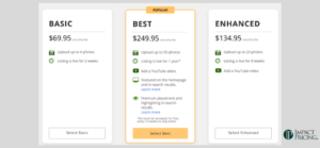
Blogcast: Evaluating a Pricing Strategy
This is an Impact Pricing Blog published on February 1, 2023, turned into an audio podcast so you can listen on the go. Read Full Article Here: https://impactpricing.com/blog/evaluating-a-pricing-strategy/ [powerpress] If you have any feedback, definitely send it. You can reach us at mark@impactpricing.com. Now, go make an impact. Connect with Mark Stiving: Email: mark@impactpricing.com LinkedIn: https://www.linkedin.com/in/stiving/
10 Mar 20233min
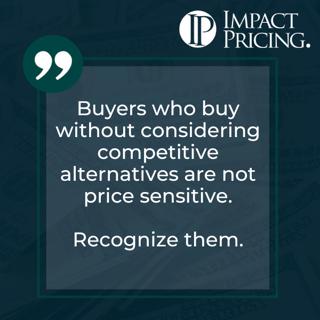
Pricing Table Topics: 8 of Clubs – Buyers Who Buy without Considering Competitive Alternatives
This one is the 8 of Clubs from the Selling Value card deck. Okay. You're wondering to yourself, do buyers ever not consider competitive alternatives? And the answer is, absolutely yes! Some easy consumer examples. When you buy popcorn at the movie theater, you couldn't buy popcorn anywhere else. Therefore, you didn't consider a competitive alternative. You just said, am I going to buy popcorn here or not? And that's why they get away with charging really high prices for popcorn. What about last gas for 75 miles, when you're in the middle of nowhere and you only have an eighth of a tank of gas left? Are you going to buy gas at that gas station that's four times the price? Heck, yes you are! And that's because they know you didn't consider a competitive alternative. There wasn't one to consider at the time. Our job as salespeople should be to try to find different customers and recognize whether they're going to be looking at, or talking to, competitive alternatives. For example, if someone was referred to you, they're probably not going to go talk to a competitive alternative. They might, but they might not. So let's treat them as though they won't. What if someone's buying an add-on to a current product they have that you've sold to them? They're probably only buying it from you. What if they're using your subscriptions and are they going to buy the upgraded package or are they even going to pay you this month for the subscription that they bought a few months ago? In each one of those decisions, they're just deciding, am I going to buy from you? But they're not saying, should I switch? Should I look at competitive alternatives? There are lots of situations, and product types, where buyers don't look at competitive alternatives. We should be focusing on finding those buyers and making sure we're not discounting, or if we have the opportunity, consider raising the price a little bit. I can almost guarantee you they won't make a different decision. We hope you enjoyed this example of Pricing Table Topics. What you just heard was done without a script. If you want to get better at speaking about pricing and value, grab a deck of our cards, pick a card, read the saying, then talk for one to two minutes about what that card says. You'll become a better speaker and expert. If you have any questions or feedback, please email me, mark@impactpricing.com. Now, go make an impact. Connect with Mark Stiving: Email: mark@impactpricing.com LinkedIn: https://www.linkedin.com/in/stiving/
8 Mar 20233min
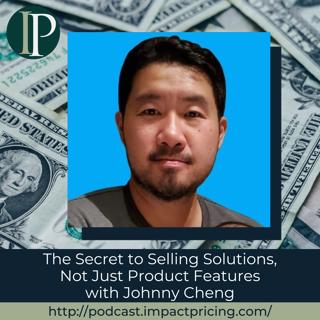
The Secret to Selling Solutions, Not Just Product Features with Johnny Cheng
Johnny Cheng is the Senior Director of Pricing and Packaging at ClickUp. He was the Senior Director of Pricing and Packaging at Coupa Software, and has years of experience in Product Marketing through various companies. In this episode, Johnny shares his knowledge and experience on product marketing and product management as he educates us on the benefits of solution pricing, especially as to how a lens test helps on creating packages. Why you have to checkout today’s podcast: Find out what crucial perspective companies miss when pricing sits in finance Learn about the benefits of having solution pricing, as well as to how you can sell value instead of features Discover a packaging system that incredibly works, both for the customers and the company “Go do the lens test. Even if your packaging is already set, I would go back and do that exercise. I feel like if you do it across different teams, you'll be very surprised at what you see.” – Johnny Cheng Topics Covered: 01:05 – How Johnny got into pricing 01:50 – Comparing the role of product management with product marketing 05:46 – Does pricing ever exist without packaging or are the two just so tightly connected? 08:33 – Johnny as a strong believer of having solution pricing 12:18 – Johnny vs. Mark on good, better, best 15:16 – The system Johnny uses to decide which features goes in which package 20:58 – Tips and tools that can help you sell value instead of features 26:56 – Salespeople discounting too much because they don’t sell the value of the product 28:47 – Johnny’s pricing advice 30:05 – Connect with Johnny Key Takeaways: “I'm seeing more and more in product marketing just exactly to your point. It's more customer driven, it's more go-to market driven, it's more value driven. And so, if you sit in product management, every feature you release is the best feature ever, right? But product marketing really understands the value and how to apply to certain customers, what the use cases are, what the different profiles are and how you monetize that, and I feel like you kind of lose that lens sitting in the product management side.” – Johnny Cheng “Once you have kind of that product marketing angle, that's where the magic happens, right? Because that feature could be worth $1 to this one segment and $10 to this other segment. You would never know unless you actually go find out what their pain points are, find out what their needs are.” – Johnny Cheng People / Resources Mentioned: ClickUp: https://clickup.com/ Marketo: https://business.adobe.com/products/marketo/adobe-marketo.html Gainsight: https://www.gainsight.com/ Coupa: https://www.coupa.com/ Selling Value: https://selling-value.com/ Zoom: https://zoom.us/ Connect with Johnny Cheng: LinkedIn: https://www.linkedin.com/in/jdcheng/ Email: jcheng@clickup.com Connect with Mark Stiving: LinkedIn: https://www.linkedin.com/in/stiving/ Email: mailto:mark@impactpricing.com
6 Mar 202331min

Blogcast: Transitioning to Selling Subscriptions
This is an Impact Pricing Blog published on January 25, 2023, turned into an audio podcast so you can listen on the go. Read Full Article Here: https://impactpricing.com/blog/transitioning-to-selling-subscriptions/ [powerpress] If you have any feedback, definitely send it. You can reach us at mark@impactpricing.com. Now, go make an impact. Connect with Mark Stiving: Email: mark@impactpricing.com LinkedIn: https://www.linkedin.com/in/stiving/
3 Mar 20233min
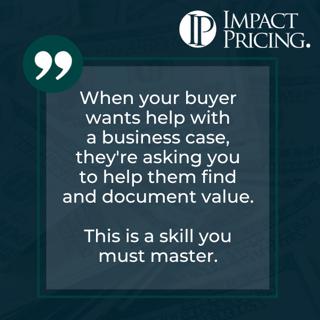
Pricing Table Topics: 8 of Hearts – Buyer Wants Help with a Business Case
This one is the 8 of Hearts from the Selling Value card deck. Oh, my gosh! If a buyer ever asked me to help them with a business case, I'm inside quietly jumping up and down rejoicing because they're asking me to do what I would like to be doing with them anyway. So, instead of me walking them through and convincing them that this is an important thing that they really want to know the answer to, they asked me. Oh, my gosh! And so, if they've asked me for help with a business case, what they're really asking for is, how do I convince my executives that we should be spending money on this problem? Or a better way to say that is, how do I document the value of solving these problems? How much additional profit are we going to make because we spend money to solve these problems? That is such a phenomenal place to be because inherent value, the value of solving the problems, is the piece of the puzzle that we as salespeople so rarely spend a lot of time on, and yet we should. Because not only does it help our buyer when they're trying to sell it internally, it helps them when they're trying to justify the pricing or spending the money on solving this problem. But it also helps us build a relationship with our client because we're demonstrating to them, we understand their problems. So, absolutely, if someone asks us to help them with the business case, don't look at that as a chore. Look at that as a golden opportunity because they just asked us to do what we really should be doing with them anyway. We hope you enjoyed this example of Pricing Table Topics. What you just heard was done without a script. If you want to get better at speaking about pricing and value, grab a deck of our cards, pick a card, read the saying, then talk for one to two minutes about what that card says. You'll become a better speaker and expert. If you have any questions or feedback, please email me, mark@impactpricing.com. Now, go make an impact. Connect with Mark Stiving: Email: mark@impactpricing.com LinkedIn: https://www.linkedin.com/in/stiving/
1 Mar 20232min
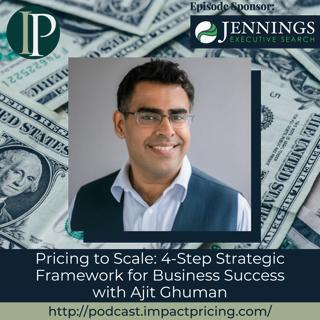
Pricing to Scale: 4-Step Strategic Framework for Business Success with Ajit Ghuman
Ajit Ghuman is the Director of Product Management, Pricing, Packaging, and Customer Experience at Twilio. He is the author of the book Price to Scale. He’s had Director of Product Marketing title at several companies, and he added pricing to his title in 2019. Ajit is fascinated by ancient mysteries. In this episode, Ajit educates us on pricing and packaging as he shares why he’s passionate when it comes to changing the monetization stack, especially on companies being able to change pricing strategies a lot quicker than today. Why you have to checkout today’s podcast: Learn how pricing can done through a four-step framework; Find out how to create a pricing system that can work well with all strategies; and Understand why it’s an advantage to be able to change pricing strategies quickly “I think of pricing in a four-step framework. The four steps are packaging, pricing metric, tariff structure, and then price point.” – Ajit Ghuman Topics Covered: 01:44 – How Ajit got into pricing 03:09 – Ajit talks about his book, Price to Scale, sharing the reason behind writing it and its key concept 04:40 – Backstory as to why Ajit wants to change the monetization stack 08:12 – Why the term quote to cash doesn’t bother Mark vs. how Ajit sees it 11:01 – We need better systems to let the strategy come to life 13:16 – How to create a code to cash (pricing) system that can work well with all pricing strategies 16:33 – Do companies do this practice in pricing? 18:30 – Talking about companies not monitoring usage of their product 19:59 – How often should companies tweak their packaging? 23:08 – How Ajit and Mark decide what feature goes into what package 25:31 – Why Ajit is a bit averse to good, better, best 29:40 – Ajit’s pricing advice 30:35 – Connect with Ajit Key Takeaways: “You have the best pricing strategy in the world, let’s say you hire Mark Stiving to help you with your pricing, and you have the best thing on paper, but your systems don't let you operationalize it, so you're stuck in the water. That's what I'm saying. We need better systems to let the strategy come to life.” – Ajit Ghuman “You're not going to have people write code all the time to do this. Otherwise, your main product will suffer. So just like you used to spend money on product analytics in the past or some other piece of core technology, I think there is a realization companies are having now, like somebody needs to build best practice products that do these things so that we can hook up into their APIs or their SDK and just do it.” – Ajit Ghuman People / Resources Mentioned: Price to Scale: https://ajitghuman.com/pricing-book/ Code to Cash podcast: www.codeto.cash/author/ajitpal/ Dor Sasson: https://www.linkedin.com/in/datapm/ Connect with Ajit Ghuman: LinkedIn: https://www.linkedin.com/in/ajitpalghuman/ Email: ajit@pricetoscale.com Connect with Mark Stiving: LinkedIn: https://www.linkedin.com/in/stiving/ Email: mailto:mark@impactpricing.com
27 Feb 202330min

Blogcast: Another Ridiculous Fee
This is an Impact Pricing Blog published on January 18, 2023, turned into an audio podcast so you can listen on the go. Read Full Article Here: https://impactpricing.com/blog/another-ridiculous-fee/ [powerpress] If you have any feedback, definitely send it. You can reach us at mark@impactpricing.com. Now, go make an impact. Connect with Mark Stiving: Email: mark@impactpricing.com LinkedIn: https://www.linkedin.com/in/stiving/
24 Feb 20232min
